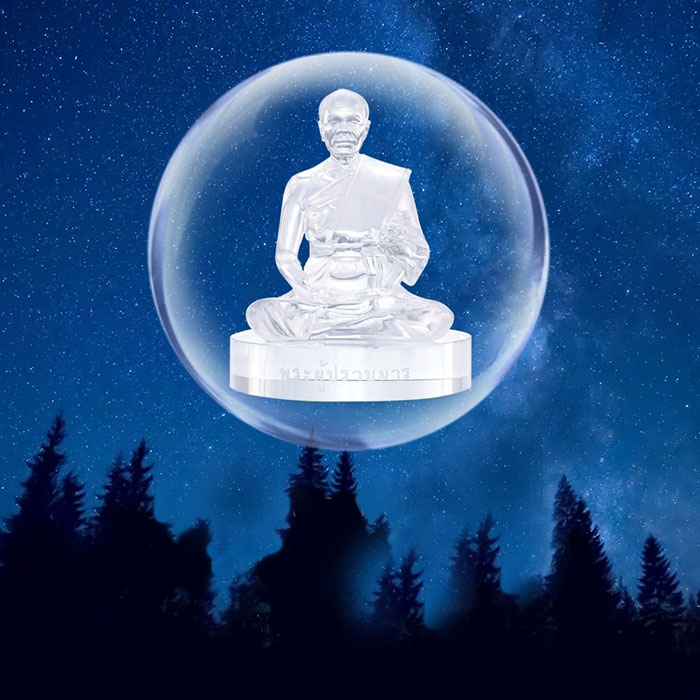
On Sundays, quarter-moon days and Thursday afternoons Luangpu would teach meditation at the main hall at Wat Paknam. His students consisted of monks, novices, nuns, temple residents, and the public at large. A cumulative total of forty-thousand people have come to study meditation with him over the course of the first fifteen years. Only during the Second World War did he shift the venue for meditation teaching to the house of a student, close to the temple. But teaching returned to the main hall at Wat Paknam again after the War.
Luangpu would commence his teaching by enquiring whether those in the congregation considered themselves upholders of the Buddhist faith or not. If so, they had the twofold duty of scriptural learning and meditation. Of the two, meditation was the most important.
After preaching thus to the gathering, Luangpu would order the candles and incense in front of the shrine to be lit. He would then lead the congregation together in worship, reciting 'Namo-tassa...' three times in homage to the Buddhas of the past, present, and future. The chanting continued with a request for forgiveness of transgressions committed by body, speech and mind against the Triple Gem. Finally, there would be the request to all the Buddhas, Dhamma, and Sangha, to establish themselves within the mind of each of the congregation.
He would then tell everyone to adopt a comfortable posture for meditation. Pointing to a figure drawn on a blackboard, he would explain where and how to concentrate the mind. There were two aids involved in concentration: visualizing the object of meditation (a crystal ball or a sphere), and reciting the mantra, "samma-arahang".
(For full instruction on basic meditation, refer to page 222)
After teaching the meditation technique at length, Luangpu would tell the gathering to proceed on their own, and he would continue to speak in low tones, aiding them, until eventually his voice faded away into silence.
The meditation would last for about half an hour.
Then Luangpu's voice would rise anew, ending the session, and palms together, he intoned aloud in Pali calling on the Grace of the Triple Gem to protect and bless the congregation.
Luangpu said that the depth of insight in the Dhammakaya technique was so vast that meditating for twelve hours a day for a lifetime would still be insufficient to exhaust its extent, and the bliss of meditation was so great that one could meditate for seven days and seven nights straight without getting up from his seat.
He said:
"The happiness of meditation is like tasting delicacies in the different levels of a tiffinset. You taste the food in the topmost caddy and it is delicious; the next dish down is more delicious than the first; the third is tastier still. Each successive dish becomes progressively more delicious."